
Nachgefragt – die Reform der Zwangsbehandlung mit Neuroleptika in der Praxis der Betreuungsgerichte
http://psychiatrierecht.de/nachgefragt.htm
http://www.die-bpe.de/
Von RA Thomas Saschenbrecker
und em. Prof. Wolf-Dieter Narr
Abhandlung als Broschüre: hier bestellen oder selber ausdrucken
Abhandlung als Broschüre: hier bestellen oder selber ausdrucken
Hinweis: um eine Fußnote zu lesen, bitte den Cursor direkt daraufhalten oder am Ende des Textes lesen
Die Diskussion über die Zulässigkeit einer ärztlichen Zwangsbehandlung mit Neuroleptika gegen den Willen eines Patienten im Rahmen einer Unterbringung nach § 1906 BGB hat auch nach den richtungsweisenden Entscheidungen des Bundesverfassungsgerichtes nach 20111 schon wegen der hohen Bedeutung des Grundrechts aus Art. 2, Abs. 2, Satz 1 GG nichts an Aktualität verloren.
Mit Vorlagebeschluss vom 01. Juli 2015 – XII ZB 89/15 hat jüngst der BGH dem Bundesverfassungsgericht die Frage zur Entscheidung vorgelegt, ob § 1906 Abs. 3 BGB n.F. mit dem Gleichheitsgrundsatz aus Art. 3 Abs. 1 GG vereinbar sei. Motiv des 12. Senates des BGH war allerdings eher eine vermutete Schlechterstellung von betroffenen Patienten, die sich einer Zwangsbehandlung räumlich nicht entziehen wollen oder hierzu körperlich nicht in der Lage sind, gegenüber nach § 1906 BGB untergebrachten Betroffenen. Der BGH geht dabei von seiner eigenen engen Definition der mit Freiheitsentziehung verbundenen Unterbringung aus2, die nur solche Maßnahmen umfasst, welche die “persönliche Bewegungsfreiheit des Betroffenen nicht nur kurzfristig auf einen bestimmten räumlichen Lebensbereich” begrenzt.
Die aufgrund ihrer persönlichen Disposition nicht von Freiheitsentzug betroffenen Personen wähnt der BGH deshalb benachteiligt, weil entsprechende Zwangsmaßnahmen nur im Rahmen einer Unterbringung nach § 1906 Abs. 1 BGB erfolgen könnten. Soweit eine solche nicht in Betracht käme, gäbe es auch keine Grundlage der Zwangsbehandlung.
Auch wenn der BGH mit seinem Vorlagebeschluss mehr oder minder ersichtlich die Einführung einer rechtlich in hohem Maße bedenklichen ambulanten Zwangsbehandlung favorisiert, ist zumindest zweifelhaft, ob das Bundesverfassungsgericht diesem Drängen in Sinne einer allumfassenden Vernunfthoheit im Gesundheitswesen nachkommen wird3, um den Gesetzgeber in Konsequenz hieraus zur Schaffung von Rechtsgrundlagen für die ambulante Zwangsbehandlung zu veranlassen. Wesentlich naheliegender und mit weitreichenderen Folgen dürfte daher sein, dass eine Entscheidung der Verfassungshüter zum Vorlagebeschluss in letzter Konsequenz zu einer Ablehnung der Grundlagen der Zwangsbehandlung insgesamt führen könnte. Der Gesetzgeber wäre mit seiner Novelle zur Zwangsbehandlung gescheitert.
Vor dem Hintergrund der Rechtsprechung des Bundesverfassungsgerichts4 und des Bundesgerichtshofs5 zum 26. Februar 2013 in Kraft getretenen Neuregelungen der § 1906 Abs. 3 und 3a BGB sowie der §§ 312, 323, 329 und 333 FamFG wollte der Gesetzgeber materielle und formelle Eingriffsvoraussetzungen für die Veranlassung einer ärztlichen Zwangsmaßnahme unter geschlossenen stationären Bedingungen durch den Betreuer neu schaffen6. Die Frage, ob dieses Vorhaben der Rechtspraxis gerecht geworden ist oder aber die Bedeutung und die Tragweite des Grundrechts aus Art. 2, Abs. 2, Satz 1 GG weiterhin verkannt wird, ist der Anlass, die Genehmigung der Einwilligung in eine ärztliche Zwangsmaßnahme nach § 312 Satz 1 Nr. 1 FamFG in Verbindung mit § 1906 Abs. 1 bis 3a BGB nach zwei Jahren der Reform in der Praxis der Betreuungsgerichte in einer Totalerhebung zu erfragen. Das Bundesverfassungsgericht muss nach wie vor Verletzungen der Bedeutung und Tragweite des Grundrechts aus Art. 2 Abs. 2 Satz 1 GG rügen7.
Grundproblematik:
Nach einem Moratorium, das auf die Rechtsprechung des Verfassungsgerichtes 2 BvR 882/09 vom 23.03.2011 und 2 BvR 633/11 vom 12.10.2011 gründete und den Bundesgerichtshof veranlasste, in zwei Beschlüssen vom 20.06.20128 zu § 1906 BGB a.F.9 die Zwangsbehandlung mit Neuroleptika für unzulässig zu erklären und seine bisherige Rechtsprechung zur medikamentösen Zwangsbehandlung im Rahmen des § 1906 BGB a.F. aufzugeben, soll die Zwangsbehandlung von nicht einwilligungsfähigen psychisch Kranken nach § 1906 BGB auf Bundesebene im Betreuungsrecht seit dem 26.02.2013 wieder möglich sein. Der Bundestag billigte am 17.01.2013 einen entsprechenden Gesetzentwurf von Union und FDP, wonach Ärzten grundsätzlich als `ultima ratio´ erlaubt wird, psychisch kranke oder geistig behinderte Menschen, die als nicht einwilligungsfähig gelten und bei denen keine wirksame Willensbekundung durch eine Patientenverfügung entsprechend § 1901a BGB vorliegt, auch gegen ihren Willen zu behandeln.
Der Gesetzgeber hat durch das Gesetz zur Regelung der betreuungsrechtlichen Einwilligung in eine ärztliche Zwangsmaßnahme vom 18. Februar 201310 mit Wirkung vom 26. Februar 2013 in die Vorschrift des § 1906 BGB die neuen Absätze 3 und 3a eingefügt. So wurden die Voraussetzungen der Einwilligung des Betreuers in eine ärztliche Zwangsmaßnahme, sowie das gerichtliche Genehmigungserfordernis geregelt.
Die medizinische Behandlung gegen den natürlichen Willen (Zwangsbehandlung) einer betroffenen Person greift in deren Grundrecht aus Art. 2 Abs. 2 Satz 1 GG ein, das die körperliche Integrität der Grundrechtsträgerin und damit auch das diesbezügliche Selbstbestimmungsrecht schützt. Zwangsbehandlung ist rechtlich damit zunächst von Verfassungs wegen verboten. Zwangsbehandlung könnte damit wenn überhaupt, wie jeder andere Grundrechtseingriff, nur auf der Grundlage eines Gesetzes zulässig werden, das die Voraussetzungen für die Zulässigkeit des Eingriffs bestimmte11.
Der Grundsatz des Vorbehaltes des Gesetzes für die materiellen und für die formellen Eingriffsvoraussetzungen hat den Sinn, die primäre Zuständigkeit für die Bewertung von Grundrechtsbeschränkungen als begründet oder ungerechtfertigt zu bestimmen. Nur so ist gewährleistet, dass die Grenzen zwischen zulässigem und unzulässigem Grundrechtsgebrauch und zwischen zulässiger und unzulässiger Grundrechtseinschränkung nicht fallweise nach eigener Einschätzung von beliebigen Behörden oder Gerichten, sondern primär – in der Form eines allgemeinen Gesetzes – durch den Gesetzgeber gezogen werden12. Zudem wird durch einen Gesetzesvorbehalt regelmäßig eine richterliche Kontrolle der Maßnahme ermöglicht.
Die Voraussetzungen für die Zulässigkeit des Eingriffs müssen hinreichend klar und bestimmt geregelt sein. Die zur Normanwendung berufenen Entscheidungsträger der Unterbringungseinrichtungen benötigen auch im eigenen Interesse eine “klare, Rechtssicherheit vermittelnde Eingriffsgrundlage”13. Die wesentlichen Voraussetzungen für eine Zwangsbehandlung müssen aus dem Gesetz selbst in materieller, als auch in verfahrensrechtlicher Hinsicht erkennbar sein. Das bedeutete eine “über abstrakte Verhältnismäßigkeitsanforderungen hinausgehende Konkretisierung dieser Voraussetzungen”14.
Auch die weiteren Voraussetzungen für die Zulässigkeit einer Zwangsbehandlung, einschließlich der Anforderungen, denen die gesetzliche Grundlage für eine solche Behandlung genügen müsste, hat das Bundesverfassungsgericht zunächst in seinen beiden genannten Beschlüssen BvR 882/09 und 2 BvR 633/11 geklärt15, um folgende Voraussetzungen für eine Zwangsbehandlung, die dem erforderlichen Gesetzesvorbehalt auch materiell-rechtlich genügt, aufzustellen:
1. Zwangsbehandlungen eines Einwilligungsfähigen sind generell unzulässig. Dem Einwilligungsfähigen gleichgestellt sind Betroffene, die ihren freien Willen im Rahmen einer Patientenverfügung, § 1901a BGB, vorab hinsichtlich einer künftigen Zwangsbehandlung bzw. Nichtbehandlung verbindlich festgelegt haben.
Eine vorab formulierte Patientenverfügung ist in jedem Fall bindend, wenn diese die Zwangsbehandlung und eine vorausgehende Untersuchung untersagt: Eine Patientenverfügung manifestiert den früher geäußerten freien Willen eines Patienten selbst dann, wenn dieser im Zuge einer akuten Erkrankung als nicht einwilligungsfähig gälte. Der in der Verfügung geäußerte Wille ist maßgeblich. Es handelt sich um Entscheidungen des Betroffenen über die Einwilligung oder Nichteinwilligung in bestimmte Untersuchungen des Gesundheitszustands, Heilbehandlungen oder ärztliche Eingriffe, die auf die darauffolgend konkret eingetretene Lebens- und Behandlungssituation zutreffen. Diese Entscheidung ist für Ärzte, Gerichte und auch andere Beteiligte bindend.
2. Zwangsbehandlungen müssen den angezielten “Erfolg” erreichen
3. Zwangsbehandlung ist nur als “ultima ratio” denkbar.
4. Jeder Zwangsbehandlung muss unabhängig von der Einwilligungsfähigkeit eines Patienten “der ernsthafte, mit dem nötigen Zeitaufwand und ohne Ausübung unzulässigen Drucks unternommene Versuch vorausgegangen sein, die Zustimmung des Untergebrachten zu erreichen”16.
5. Eine Zwangsbehandlung ist so rechtzeitig anzukündigen, dass der Betroffene vorher rechtzeitig vor den Gerichten Rechtsschutz suchen kann.
6. Anordnung und Überwachung der Zwangsbehandlung dürften nur durch die Ärzte erfolgen, die in der Dokumentation zur Aufklärung und zur Behandlung namentlich genannt werden. Die Zwangsbehandlung selber, aber auch das vorangegangene Gespräch, müssen widerspruchsfrei von jenen Ärzten schriftlich dokumentiert werden.
7. Die Zwangsmedikation muss vorab in jedem Schritt hinsichtlich der Behandlung, ihrer Art, ihrer Dauer und der Dosierung der Medikation konkretisiert werden. In dem Genehmigungsbeschluss muss “die von dem Betreuten zu duldende Behandlung präzise an(ge)geben” werden. Dazu gehören die Angabe des Medikaments, seine Dosierung, Verabreichungshäufigkeit und ein Ersatzmedikament, falls das genehmigte Medikament nicht vertragen wird17.
8. Die Notwendigkeit einer länger andauernden Zwangsbehandlung muss von einem einrichtungsexternen Gutachtergremium geprüft werden.
9. Wenn eine gesetzliche Regelung fehlt, kann sie nicht mehr im Wege einer verfassungskonformen Auslegung ergänzt werden18.
Kein Patient kann im Zuge einer Duldungspflicht genötigt werden, einen medizinischen Eingriff oder eine medizinische Behandlung und damit eine Maßnahme zu dulden, “die den Straftatbestand der Körperverletzung erfüllt”. Jeder Eingriff in die körperliche Unversehrtheit ist “nur mit der Einwilligung des Betroffenen zulässig”19.
Während es selbstverständlich ist, dass ein Patient auch unter den Bedingungen von freiheitsentziehenden Maßnahmen im Zuge seines Selbstbestimmungsrechtes jedwede ärztliche oder therapeutische Behandlung ablehnen darf, auch wenn gesundheitliche Gefahr droht20, soll dies bei einem psychisch kranken Menschen im Zuge einer speziellen Gesetzgebung für psychisch Kranke zumindest dann nicht gelten, wenn ein Facharzt für Psychiatrie bei dem Betroffenen von beabsichtigten Zwangsmaßnahmen “Einwilligungsunfähigkeit” konstatiert hat.
Zwangsbehandlung wurde bis 2011 auf verschiedene Rechtsgrundlagen gestützt, betreuungsrechtlich auf die §§ 1904 und 1906 a.F. BGB, öffentlich-rechtlich auf landesrechtliche Vorschriften zur Unterbring psychisch Kranker (PsychKG).
Anlässlich einer Entscheidung zum Unterbringungsgesetz des Landes Baden-Württemberg hat das Bundesverfassungsgericht 1981 auf die mögliche Gefahr einer “Vernunfthoheit des Arztes über den Patienten” und einer “umfassende staatliche Gesundheitsvormundschaft” hingewiesen. Dieser sei auf dem Rechtsweg im Zuge effektiver richterlicher Kontrolle auch im Sinne eines “Rechtes auf Krankheit” zu begegnen21. Die Richter des BVerfG zogen dabei nicht die naheliegende Konsequenz, die Legitimation von Zwangseingriffen generell in Frage zu stellen. Vielmehr wurde in dieser Entscheidung aus 1981 zwischen leichteren Formen psychischer Erkrankungen, bei denen eben dieses “Recht auf Krankheit” gelten solle, und schwereren Verlaufsformen, bei denen die “psychisch Kranken vor sich selbst in Schutz zu nehmen” seien, unterschieden. Nur für die leichteren Verlaufsformen und “Abweichungen vom Durchschnittsverhalten”22 anerkannten die Richter ein Selbstbestimmungsrecht jenseits staatlicher Fürsorge.
Seit 2011 fand in der höchstrichterlichen Rechtsprechung kontinuierlich bis heute ein tiefgreifender Wandel statt. Dass Zwangsbehandlung rechtfertigende Eingriffe besondere Grundrechtsintensität aufweisen, wurde in mehreren Leitsatzentscheidungen erstmals in dieser Deutlichkeit anerkannt. Bei Einwilligungsfähigkeit eines Patienten kommen sie generell nicht in Betracht.
Für den Maßregelvollzug wurde die Zwangsbehandlung mit Neuroleptika mangels hinreichender Rechtsgrundlage erstmals mit Beschluss des Bundesverfassungsgerichtes vom 23.3.201123 in Rheinland-Pfalz für unzulässig beschieden (vorausgegangene Eilentscheidung 2009). Die dortige bislang herangezogene Eingriffsgrundlage, § 6 Absatz 1 Satz 2 MVollzG des Bundeslandes Rheinland-Pfalz, wurde für nichtig erklärt. Es folgten weitere Nichtigkeitsentscheidungen des Bundesverfassungsgerichtes vom 12.10.2011 zu § 8 UBG BW des Bundeslandes Baden-Württemberg24 und am 10. Februar 2013 zu den landesgesetzlichen Regelungen der §§ 22, 23 SächsPsychKG25. Im November 2013 erfolgte eine weitere Entscheidung des Bundesverfassungsgerichtes zum Erfordernis einer grundrechtlich nirgends hinzunehmenden Rechtfertigung einer Zwangsbehandlung26 bezüglich einer hinreichenden Sachaufklärung, ebenso in 201527. Auch Verletzungen des Verhältnismäßigkeitsgrundsatzes waren Gegenstand der verfassungsgerichtlichen Rechtsprechung28.
Gerade wegen der Potenzierung der Rechtsgutverletzungen des § 1906 BGB (dem Patienten wird durch Unterbringung auf einer geschlossenen Station seine Freiheit vollständig entzogen; er wird zwangsweise durch massive Eingriffe in die körperliche Unversehrtheit veranlasst, Psychopharmaka mit wesensveränderndem Einfluss und starken Nebenwirkungen einzunehmen) kann es zur denkbar schwersten Eingriffsintensität beim Betroffenen kommen. Er unterliegt schutzlos nicht nur dem Freiheitsentzug, sondern kumulativ hierzu der Zwangsbehandlung. Sie geht oft einher mit Fixierungen und anderen freiheitsbeschränkenden Maßnahmen des § 1906 Abs. 4 BGB.
Eine Zwangsbehandlung eines einsichtsfähigen und einwilligungsfähigen Patienten muss nach den verfassungsrechtlichen Vorgaben zum Selbstbestimmungsrecht des Patienten aus den Entscheidungen von 2011 und 2012 generell ohne Ausnahme künftig ausscheiden.
Nur wenn ein Patient krankheitsbedingt nicht einwilligungsfähig sei, sei eine Zwangsbehandlung bei hinreichenden gesetzlichen Vorgaben denkbar. Denn nur in diesem Falle könne der Betroffene überhaupt gehindert sein, “seine grundrechtlichen Belange wahrzunehmen”. Das könne ebenfalls “zu einer Verletzung der Menschenwürde führen”.
Das Bundesverfassungsgericht hatte damit eine verfassungsrechtliche Rechtfertigung in sehr engen Grenzen zugelassen. Der BGH hat darauf verwiesen, “dass das Fehlen von Zwangsbefugnissen zur Durchsetzung notwendiger medizinischer Maßnahmen dazu führen könne, dass ein Betroffener ohne eine solche Behandlung einen erheblichen Schaden nehme”29. Ebenso hält der 12. Zivilsenat des BGH ärztliche Zwangsmaßnahmen außerhalb einer Unterbringung nach § 1906 Absatz 1 BGB für wünschenswert30. Dies obgleich der BGH noch 2000 in einer anstaltsexternen Zwangsbehandlung eine andere, aber ebenso schwerwiegende Eingriffsqualität im Sinne einer “Belastung für den Betroffenen” gesehen hatte, weil der Betroffene sich nur mit Zwang, unter Einschaltung der Polizei oder durch entsprechende Drohung, in das Psychiatrische Krankenhaus zu einer Zwangsbehandlung verbracht sähe, auch “wenn er die Behandlung dort ohne Gegenwehr über sich ergehen lasse”. Zudem erkennt der BGH in seiner Entscheidung aus 2000, dass die “Art der Vorführung nach außen hin diskriminierende Wirkung” hat.31
Die verfassungsgerichtlich aufgezeigte Option, dass es dem Gesetzgeber nach wie vor frei steht, Zwangsbehandlung “durch Schweigen zu verbieten”32 wird bislang nicht bzw. noch nicht vom BGH als tatsächliche Alternative zur derzeitigen Situation der gesetzlich normierten Zwangsbehandlung gesehen.
Die Forderungen nach einem “Schweigen” des Gesetzgebers zu jeglicher Form der Zwangsbehandlung mit Neuroleptika im psychiatrischen Bereich wurde indes schon durch den am 1. Februar 2013 veröffentlichten Bericht über den Missbrauch von Gesundheitseinrichtungen erhoben. Der UN-Sonderberichterstatter über Folter und andere grausame, unmenschliche oder erniedrigende Behandlung oder Strafe, Juan E. Méndez, sprach sich für ein absolutes Verbot von jeglichen Zwangsmaßnahmen aus und empfiehlt den Staaten dem damals schon beschlossenen Gesetz gegenläufige gesetzliche Änderungen33. “Die Darstellung des Sonderberichterstatters” sei, so das Institut für Menschenrechte, “wegen der strengen menschenrechtlichen Anforderungen an die psychiatrische Versorgung in Einrichtungen für die aktuelle Diskussion in Deutschland zu Psychiatrie und Maßregelvollzug von großer Bedeutung und hoher Aktualität.” Seine Position unterstreiche “das Erfordernis, die psychiatrische Versorgung in Deutschland konsequent am Ziel der Freiwilligkeit auszurichten und eine darauf verpflichtete Psychiatriereform voranzutreiben.”34
Auch der UN-Fachausschuss für die Behindertenrechtskonvention (BRK) hat im September 2015 seine Richtlinien zur Interpretation und dem Umgang mit dem Artikel 14 der BRK, Freiheit und Sicherheit der Person, dahingehend verabschiedet, dass explizit die Möglichkeiten untersagt werden, die das Grundgesetz zur Aufhebung der Grundrechte durch ein Gesetz offen gelassen hat, wenn diese gesetzlichen Sonderregelungen eine “Behinderung” zum Kriterium haben35. Hierzu zählt auch die Zwangsbehandlung psychisch Kranker36. Eine solche Behandlung gegen den Willen wäre bei einem gesunden Menschen ausgeschlossen.
Das Deutsche Institut für Menschenrechte hatte sich schon 2013 in mehreren Stellungnahmen u.a. für den Deutschen Bundestag für eine “gewaltfreie Psychiatrie” ausgesprochen und ausgeführt, “Es bestehen nach wie vor große Zweifel, ob der Entwurf im Einklang mit der UN-Behindertenrechtskonvention steht”37. Menschenrechtlich und ethisch sei es “fragwürdig, ob eine psychiatrische Behandlung ohne freie Zustimmung der betroffenen Person vorgenommen werden dürfe”. Vor dem Hintergrund der aktuellen menschenrechtlichen Diskussion und der Entwicklung des internationalen Rechts gebe es “schwerwiegende Bedenken gegen eine solche Regelung”38. Schon mit Verabschiedung der Gesetzesvorlage zur Zwangsbehandlung im Rahmen des § 1906 BGB habe Deutschland “eine historische Chance verpasst, aus den Erfahrungen einer Psychiatrie ohne Zwang zu lernen und das System der psychiatrischen Versorgung weiterzuentwickeln.” Es werde mit einem falschen und unverhältnismäßigen Ansatz über eine gesetzliche Neuregelung der Zwangsbehandlung nachgedacht, ohne eine unabdingbare, umfassende Überprüfung der Psychiatrie und strukturelle Verbesserungen der psychiatrischen Versorgung auf der Basis der Menschenrechte erfolgen zu lassen39.
Eine wesentliche Kritik des Bundesverfassungsgerichtes40 an einer Zwangsbehandlung mit Psychopharmaka besteht darin, dass in Deutschland, nachdem von der Deutschen Gesellschaft für Psychiatrie, Psychotherapie und Nervenheilkunde (DGPPN) in den neunziger Jahren initiierte Versuche zur Etablierung medizinischer “Standards” für Zwangsbehandlungen zu keinem Ergebnis geführt haben41, “nach wie vor keine medizinischen Standards für psychiatrische Zwangsbehandlungen existieren. Aus denen müsste mit der notwendigen Deutlichkeit hervorgehen, dass Zwangsbehandlungen mit dem Ziel, den Untergebrachten entlassungsfähig zu machen, ausschließlich im Fall krankheitsbedingter Einsichtsunfähigkeit zulässig sind”42. Eine entsprechende Einsichtsfähigkeit sei verbindlich zu definieren.
Distincte et clare gilt:
Ebenso praktikable wie eindeutige Standards sind nicht denkbar.
Bis heute gibt es keine verbindlichen Standards zur Beantwortung, auf welcher Grundlage Psychiater zur Einschätzung gelangen wollen, dass bei einem Patienten Einwilligungsunfähigkeit gegeben sei. Es gibt keine Standards für die Behandlung zur Wiederherstellung einer solchen Einwilligungsfähigkeit. Diese Wiederherstellung der Einwilligungsfähigkeit muss nach gesetzgeberischem Willen im Zuge der Gesetzesinitiativen erklärtermaßen das Ziel einer Zwangsbehandlung sein.
Psychiatrische Diagnosen wie die Feststellung einer psychiatrischen Erkrankung als Anlass einer Zwangsbehandlung unterliegen dem zeitlichen, ethischen und auch kulturellen Wandel. Der neu erschienene Diagnosekatalog DSM-5, der auch Grundlage für den neuen ICD-11 als Standardverzeichnis psychischer Erkrankungen werden wird, legt die Grenzen einer psychischen Erkrankung und einer zugrundeliegenden Diagnose derart weit auseinander, dass “viele Gesunde über Nacht zu psychisch Kranken”43 gemacht werden. Erwartet wird ein signifikanter Zuwachs vermeintlicher, oder auch erfundener psychiatrischer Krankheiten bei Kindern und bei Erwachsenen, die nicht zuletzt auch die Grundlage von Zwangsbehandlungen und Zwangsmedikationen sein können. Der Psychiater Allen Frances spricht in seinem Buch “NORMAL” von einer regelrechten “Inflation psychiatrischer Diagnosen” durch das neue Manual “DSM-V”.
Künftig wird die Grenze, die bisher mit jeder neuen Ausgabe bzw. Neuauflage des DSM zu Lasten des Bereichs des Normalen verschoben wurde, noch weiter gezogen werden (Eine banale Schüchternheit wird zu einer psychiatrisch behandlungspflichtigen “sozialen Phobie”, “kindliches Trotzen” wird zur psychiatrisch-behandlungspflichtigen “Wutkrankheit” und selbst starke prämenstruelle Beschwerden gelten künftig ebenso als psychische Krankheit, wie das “Binge-Eating”, also Essattacken)44. Einer Studie zufolge erfüllten schon mehr als achtzig Prozent (!) der jungen Erwachsenen die Kriterien für eine psychische Störung45.
Sich hieraus ergebende Gefahren für den vom Bundesverfassungsgericht geforderten Grundrechtschutz46 sind evident. Alleine die Diagnose einer psychischen Krankheit soll bei Annahme einer vorübergehenden Einwilligungsunfähigkeit Grundlage einer Zwangsbehandlung sein. Gerade aber der bislang bei allen Gesetzesinitiativen unbeantworteten vom Bundesverfassungsgericht47 gesehenen Frage, wie der Problematik der Ermangelung jedweder medizinischer Standards für Zwangsbehandlungen und das Kriterium der Einwilligungsunfähigkeit einer Lösung zugeführt wird, kommt bei sämtlichen geplanten Novellierungen zur Zwangsbehandlung signifikante Bedeutung zu. Bezeichnenderweise hat auch der Direktor des National Institut für Mental Health (NIHM), Thomas Insel, am 29.4.2013 in einer NIMH-Veröffentlichung ausgeführt, dass sämtliche psychiatrische Diagnosen bisher keine hinreichende Validität hatten. Er spricht von einem “lack of validity”48.
In Kumulation mit dem Umstand, dass es im Zuge einer Zwangsbehandlung keine freie Arztwahl, geschweige denn eine Option zur Auswahl der Therapie gäbe, sowie kein Recht, bei Zweifeln an der vorgeschlagenen Therapie einen anderen Arzt aufzusuchen, um sich eine zweite Meinung einzuholen49, das seitens vieler gesetzlichen Krankenkassen für ihre Versicherten eingeräumt wird, dürfte elementarer Grundrechtschutz vor dem Hintergrund immer weiter ausufernder, invalider, psychiatrischer Diagnosestellungen auf dem Spiel stehen.
Die Umfrage
In einer Totalerhebung wurden 676 Amtsgerichte in ganz Deutschland per Fax angeschrieben. Vor dem Hintergrund der Reform wurden sie gebeten, Fragen in 4 Komplexen zu beantworten50. Es gingen 181 Antworten ein, von 5 Gerichten mehrere Antworten verschiedener Richter, also 176 antwortende Amtsgerichte. Das sind rund 26 %.
Zu berücksichtigen ist dabei, dass die Justizministerien der Länder Bayern, Nordrhein-Westfalen und Schleswig-Holstein eine Erinnerung an die Umfrage für unerwünscht erklärten, hingegen die Justizministerien der Länder Baden-Württemberg und Niedersachsen die Umfrage unterstützten. Dies schränkte den weiteren Rücklauf von Gerichten aus den drei Bundesländern, die daraufhin nicht mehr erinnert wurden, deutlich ein. Aus den anderen Ländern erreichte uns ca. 50% des Rücklaufs erst nach Erinnerung.
Die Fragen und Antworthäufigkeiten für die Komplexe A bis D lauteten wie folgt:
Komplex A)
A1. Werden an Ihrem Betreuungsgericht psychiatrische Zwangsbehandlungen richterlich genehmigt?
▢ Ja
▢ Seitens unseres AGs wird auf diese Maßnahmen verzichtet
Vom gesamten Rücklauf waren:
Zwangsbehandlung genehmigende Antworten
128
abzüglich 5 mehrfache Antworten derselben Gerichte, also 123 70 %
auf Zwang verzichtend 14 ——–8 %
keine Anträge eingegangen 11 6 %
gar keine Antwort gegeben bzw. verweigert 28 16 %
Das AG Stolzenau autorisierte, dass dessen Verzicht auf Zwangsbehandlung öffentlich benannt wird.
Komplex B)
B1. Haben die Entscheidungen des BGH und des Bundesverfassungsgerichtes zur Unzulässigkeit der Zwangsbehandlung und die darauf folgende Reform des § 1906 BGB Einfluss auf die Anzahl der betreuungsgerichtlichen Unterbringungen?
▢ Nein
▢ Ja
Wenn ja, welchen?
B2. Bitte nennen Sie uns die Anzahl der Verfahren, bei denen es in Ihrem Gericht seit dem 1.3.2013 zu Genehmigungen einer Zwangsbehandlung gekommen ist.
Bezug wird in allen folgenden % Angaben nur auf die 176 – 28 = 148 Gerichte genommen, die Antworten gegeben bzw. nicht verweigert haben:
Kein Einfluss auf die Anzahl der Unterbringungen 103 70%
Ja, hatte Einfluss auf die Anzahl der Unterbringungen 38 25%
Keine Antwort 7 ——-5 %
Angaben zwischen 0 und 167 Genehmigungen machten 120 Gerichte
(-2 mehrfache Antworten derselben Gerichte) 118 80%
Komplex C)
C1. Haben Sie in entsprechenden Beschlüssen
▢ genaue Angabe über das Arzneimittel oder den Wirkstoff,
▢ dessen (Höchst-) Dosierung,
▢ die Verabreichungshäufigkeit gemacht?
▢ die Ernsthaftigkeit eines Überzeugungsversuchs nachprüfbar ermittelt?
▢ nachprüfbar ermittelt, dass keine unzulässige Druckausübung beim Überzeugungsversuch ausgeübt wurde?
genaue Angabe über das Arzneimittel oder den Wirkstoff 110
(-3 mehrfache Antworten derselben Gerichte)
107 72 %
dessen (Höchst-) Dosierung 100
(-3 mehrfache Antworten derselben Gerichte)
97 65,5 %
die Verabreichungshäufigkeit 96
(-2 mehrfache Antworten derselben Gerichte)
94 63,5,%
die Ernsthaftigkeit eines Überzeugungsversuchs nachprüfbar
ermittelt 104 (-3)
101 ——-68 %
nachprüfbar ermittelt, dass keine unzulässige Druckausübung
beim Überzeugungsversuch ausgeübt wurde
47 32 %
alle 5 gefragten Kriterien entsprechend den höchstrichterlichen
Beschlüssen erfüllt 35 23,5 %
Auffällig: Bei den vier Gerichten mit mehrfachen Antworten, sind die Antworten der Richter uneinheitlich.
Komplex D)
•Wie beeinflusst eine Patientenverfügung, in der psychiatrische Diagnostik und Behandlung mit Neuroleptika ausgeschlossen wird, den Ausgang eines Verfahrens auf Genehmigung einer Zwangsbehandlung?
•Haben Sie nachprüfbare konkrete Anhaltspunkte ermittelt, um den mutmaßlichen Willen zu bestimmen, zwangsbehandelt werden zu wollen, wenn bei einem einwilligungsunfähigen psychisch Kranken keine Patientenverfügung vorhanden war?
▢ Nein
▢ Ja
Wenn ja welche?
Wie beeinflusst eine Patientenverfügung den Ausgang eines
Verfahrens auf Genehmigung einer Zwangsbehandlung?
Antworten unterschiedlich (-5)
119 80%
Werden nachprüfbare konkrete Anhaltspunkte ermittelt, um
den mutmaßlichen Willen zu bestimmen, zwangsbehandelt
werden zu wollen? Nein (-2)
69 ——-47%
Ja (-2) 49 33%
Die Umfragebögen und die Antworten der Gerichte sind im Internet abrufbar: http://userpage.fu-berlin.de/narrwd/legende.htm
Die Rechtsprechung reagiert im Ergebnis dieser Befragung verhalten auf die Novellierungen des Gesetzgebers zur Zwangsbehandlung. Die Anzahl der Unterbringungsverfahren sei rückläufig, so die Tendenz mancher Betreuungsgerichte in Hinblick auf die Rechtsprechung des Bundesverfassungsgerichtes.
Die strengen Voraussetzungen, die überhaupt noch zur Unterbringung führen dürfen, sehen die Gerichte allerdings teilweise als wenig praktikabel an. Die jeweiligen Entscheidungen der Betreuungsgerichte werden dem Charakter einer Zwangsbehandlung als “ultima Ratio” nicht gerecht. Besonders zeigt sich dies daran, dass nur 23,5 % der Zwangsbehandlung genehmigenden Gerichte alle 5 gefragten Kriterien entsprechenden den höchstrichterlichen Beschlüssen erfüllten.
Die Anwendung der einschränkenden Bedingungen für “ultima Ratio” führen dazu, dass die Freiheitsgrundrechte eines Betroffenen immer wieder unzureichend beachtet werden, so dass die Thematik noch häufig vor dem Bundesverfassungsgericht mündet.
Erst jüngst hat das Bundesverfassungsgericht in zwei aktuellen Entscheidungen51 nochmals moniert, dass die Gerichte trotz eindeutiger Vorgaben des Gesetzgebers “bei der Auslegung und Anwendung des einfachen Rechts die Bedeutung und Tragweite des Freiheitsgrundrechts verkannt” hätten.
Es hat die Fachgerichte nochmals angemahnt, die Eingriffsqualität einer Zwangsbehandlung zu beachten. Inhalt und Tragweite der Freiheitsgrundrechte sei durch hinreichende Sachverhaltsprüfung Rechnung zu tragen. Die medizinische Behandlung gegen den natürlichen Willen bzw. Zwangsbehandlung einer Betroffenen könne und dürfe entgegen der früher geübten Praxis wegen des intensiven Eingriffs in die körperliche Integrität der Betroffenen als Grundrechtsträgerin nicht erfolgen, wenn nicht alle strengen Voraussetzungen hierfür erfüllt seien.
Die befragten Gerichte haben sich in der weit überwiegenden Anzahl für den Vorrang einer Patientenverfügung und für die Beachtung der Vorsorgevollmacht ausgesprochen und diese als Hindernis der Überwindung eines entgegenstehenden Willens bei der Zwangsbehandlung anerkannt. Bedenklich ist gleichwohl, dass rd. 20% der Gerichte nach wie vor Schwierigkeiten haben, die eindeutigen Prämissen des Gesetzgebers umzusetzen, um generell gegen eine Zwangsbehandlung zu entscheiden, wenn eine Patientenverfügung vorliegt, die Zwangsbehandlung untersagt. Hier sind die Betreuungsgerichte künftig gehalten, neue auf dem individuellen Willen basierende Lebensmodelle jenseits des psychiatrischen Zwangs zuzulassen, denn auch die Mitgliedschaft “in einem sich gegen den Einsatz von Psychopharmaka engagierenden Verein” muss einem Betreuungsgericht Anlass sein, zu ermitteln, ob sich der Betroffene nicht schon “im Zustand freier Willensbildung zur Absetzung der Neuroleptika entschieden hat” und ein beachtlicher, der Zwangsbehandlung entgegenstehender, Wille kundgetan wurde52.
Die Last der Prüfungsdichte, die die Betreuungsgerichte als kaum praktikabel beklagen, wiegt in Hinblick auf diese aktuellen Entscheidungen des Verfassungsgerichtes noch schwerer. Auch bei psychiatrischer Behandlung wird es den selbstbestimmten Patienten geben. Die bisherige Praxis der Behandlung eines Betroffenen gegen seinen Willen mit Neuroleptika wird zum Auslaufmodell.
Ausblick
Auch wenn in der Umfrage keine Fragen gestellt wurden, die auf die seit dem 1.1.2009 zum einfachen Gesetz gewordene BRK eingehen, ist auch für die Gerichte der seit dem 17.5.2015 vorliegende Staatenbericht des zuständigen UN-Fachausschusses über Deutschland bedeutsam. In ihm wird im Hinblick auf die Psychiatrie scharfe Kritik geübt, siehe insbesondere Artikel 11., 12., 25., 26., 29., 30., 33., 34. 38. Z.B. wird Zwangsbehandlung als Folter bezeichnet53.
Die Regelung zur Zwangsbehandlung zielt nach den Feststellungen des Deutschen Institutes für Menschenrechte darauf ab, sich über das Kriterium der Einwilligungsunfähigkeit “über den natürlichen Willen der betroffenen Person hinwegsetzen zu können und an die Stelle der persönlichen Entscheidung die Entscheidung Dritter zu setzen – eine so genannte, durch die BRK untersagte, ersetzende Entscheidungsfindung (“substituted decision-making”).”
Ergänzend wird dort ausgeführt: “Im Lichte der aktuellen menschenrechtlichen Diskussion, wie sie auch in Studien des UN-Hochkommissariats für Menschenrechte (UN Doc. A/HRC/10/48 vom 26. Januar 2009) und in der Auslegungspraxis des UN-Fachausschusses für die Rechte von Menschen mit Behinderungen im Zusammenhang der gesundheitlichen Versorgung von Menschen mit Behinderungen Ausdruck findet, ist der Ansatz, wonach eine psychiatrische Behandlung ohne freie und informierte Zustimmung der betroffenen Person, allein legitimiert über die Entscheidung Dritter vorgenommen werden soll, menschenrechtlich in Frage gestellt.”54
Die gesetzlichen Regelungen des § 1906 BGB haben eine “Behinderung” zum Kriterium, die gemessen an den Grundsätzen des Artikel 14 der Behindertenrechtskonvention, Freiheit und Sicherheit der Person, als Sondergesetzgebung gegen geltendes Konventionsrecht verstoßen. So der UN-Fachausschuss für die BRK und dessen in der 14. Sitzung aufgestellten Richtlinien zur Interpretation und dem Umgang mit dem Artikel 14 BRK55.
Das Bundesverfassungsgericht hatte zur Frage der Einwilligungsfähigkeit schon 2011 ausgeführt:
“In Deutschland existieren, nachdem von der Deutschen Gesellschaft für Psychiatrie, Psychotherapie und Nervenheilkunde (DGPPN) in den neunziger Jahren initiierte Versuche zur Etablierung medizinischer Standards für Zwangsbehandlungen nicht zu einem Ergebnis geführt haben (vgl. Steinert, in: Ketelsen/Schulz/Zechert, Seelische Krise und Aggressivität, 2004, S. 44 <47>), keine medizinischen Standards für psychiatrische Zwangsbehandlungen, aus denen mit der notwendigen Deutlichkeit hervorginge, dass Zwangsbehandlungen mit dem Ziel, den Untergebrachten entlassungsfähig zu machen, ausschließlich im Fall krankheitsbedingter Einsichtsunfähigkeit zulässig sind. Dass dementsprechend ein Bewusstsein hierfür in den medizinischen und juristischen Fachkreisen noch nicht allgemein verbreitet und eine gesetzliche Regelung, wie im Beschluss des Senats vom 23. März 2011 festgestellt, unverzichtbar ist, illustriert nicht zuletzt der vorliegende Fall, in dem weder die Klinik noch die Fachgerichte sich mit der Frage, ob beim Beschwerdeführer eine krankheitsbedingte Unfähigkeit zur Einsicht in die Notwendigkeit der Behandlung bestehe, auch nur ansatzweise auseinandergesetzt haben. Die bloße Feststellung einer Persönlichkeitsstörung beantwortet diese Frage nicht.”56
Der Begriff der Einwilligungsunfähigkeit ist schon deshalb problematisch, weil der Begriff in Ermangelung von Standards, als unbestimmter und damit ausfüllbarer und sich wandelnden subjektiven Definitionen zugänglicher Rechtsbegriff gelten muss. Als solcher wird er wegen der Eingriffsintensität den Anforderungen des Bundesverfassungsgerichtes ebenso wenig genügen, wie in den Vorentscheidungen der Begriff der “Regeln der ärztlichen Kunst”57.
In einer Entscheidung vom Februar 2013 hat das Bundesverfassungsgericht zu § 22 SächsPsychKG in einem weiteren Nichtigkeitsbeschluss zu entsprechenden Regelungswerken der Länder ausgeführt:
“… dass § 22 Abs. 1 Satz 1 SächsPsychKG auf die Regeln der ärztlichen Kunst verweist, ändert daran nichts. Unabhängig von der Frage, ob dieser Verweis überhaupt hinreichend deutlich eine umfassende Bindung an die Regeln der ärztlichen Kunst statuiert, liegt in einer solchen Bindung keine hinreichend deutliche gesetzliche Begrenzung der Möglichkeit der Zwangsbehandlung auf Fälle der fehlenden Einsichtsfähigkeit.”58
Ohne die Schaffung von Grundvoraussetzungen und Standards besteht jedenfalls die konkrete Gefahr einer Subjektivierung des Begriffes der Einwilligungsunfähigkeit je nach Gutdünken des jeweiligen Arztes oder Gutachters.
Eine Kritik, der sich auch die DGPPN nicht verschließen kann, wenn und soweit kritisch ausgeführt wird: “Als wenig praxisgerecht erscheint dagegen die Forderung, dass unbeteiligte Sachverständige, die nicht in die Behandlung einbezogen und nicht in der behandelnden Klinik tätig sind, in dem rechtlichen Verfahren gutachterlich tätig werden sollen. (….) Erschwerend kommt der Mangel an kompetenten, externen Gutachtern dazu59.”
Damit wird von höchster fachpsychiatrischer Ebene die Gutachterkompetenz bei der Einschätzung einer Einwilligungsunfähigkeit, die immerhin über das “ob und wie” eines erheblichen Grundrechtseingriffes entscheidet, in Frage gestellt und eingeräumt, dass je nach subjektiver Gedankenwelt und Vorstel-lungen des Sachverständigen Ergebnisse bei gleichem Probanden variieren und letztlich ein schlichtes Bauchgefühl über Freiheit oder Unterbringung und Zwangsmedikation entscheidet. Bei einem psychologischen Sachverstän-digengutachten muss es sich hingegen um eine wissenschaftliche Leistung handeln.
Die Einschätzung einer Nichteinsichtsfähigkeit in eine Behandlung ist fachlich hochgradig instabil bzw. subjektiv, weil bislang keine handhabbaren Kriterien existieren, zwischen Einsichtsfähigkeit und Nichteinsichtsfähigkeit zu unterscheiden. Hierauf einen Eingriff in Grundrechte zu stützen, ist verfassungsrechtlich jedenfalls unhaltbar.
Regelung zur Patientenverfügung – Fehlende Regelungen zur Vorsorgevollmacht
Die Regelungen zur Patientenverfügung des Gesetzesvorhabens trägt dem Selbstbestimmungsrecht Rechnung. Diesem Willen wird aber nach wie vor nicht von allen Betreuungsgerichten für eine Untersuchung wie auch für eine Behandlung Rechnung getragen. Jeder Mensch hat das Recht, sich in freier Entscheidung gegen eine Unterbringung zu seinem eigenen Schutz zu entscheiden und stattdessen mit den Risiken seiner Krankheit in Freiheit leben zu wollen. Diese Entscheidung kann auch in einer Patientenverfügung für den Fall eines späteren Verlusts der Einsichtsfähigkeit niedergelegt werden60.
Die Regelungen erfolgen in Beachtung des aus § 1901a Abs. 1 Satz 1 BGB resultierenden Selbstbestimmungsrechtes eines Patienten bei Errichtung einer Patientenverfügung. Das Recht auf Selbstbestimmung und die personale Würde des Patienten (Art. 2 Abs. 2 S. 2 GG) gebieten es, jedem Patienten gegenüber einem Arzt und Krankenhaus grundsätzlich Anspruch auf Ablehnung von Diagnosestellungen und ärztlichen Behandlungen einzuräumen. Der Vorrang wird unbedingt gewährt. Es entspricht den Vorgaben des Verfassungsgerichtes zu einem generellen Zwangsbehandlungsverbot bei Einwilligungsfähigkeit bzw. antizipierter Willensbekundung im Zustand der Einwilligungsfähigkeit.
Zusammenfassung
Inzwischen hat sich in der Rechtsprechung durchgesetzt, dass die Entscheidungen des Bundesverfassungsgerichtes vom 23.03.2011 (NJW 2011, 2113ff.) sowie vom 12.10.2011 (NJW 2011, 3571ff) für alle gesetzlichen Regelungen über Zwangsbehandlungen Bedeutung haben und Zwangsbehandlungsgesetze generell den vom Bundesverfassungsgericht aufgestellten Anforderungen genügen müssten61.
Die Entscheidungen des Bundesverfassungsgerichtes sind auch in der Rechtsprechung und weiten Teilen der Literatur allgemein als verbindlich für alle Regelwerke betreffend Zwangsmaßnahmen bei der Gabe von Neuroleptika angenommen worden.
Die Monitoring-Stelle zur UN-Behindertenrechtskonvention, die in Berlin am Deutschen Institut für Menschenrechte angesiedelt ist, sieht die Wiedereinführung von Regelungen zur Zwangsbehandlung als nicht zulässig.
In einer Stellungnahme der Monitoring-Stelle zur öffentlichen Sitzung des Rechtsausschusses des Bundestages vom Dezember 2012 wird hervorgehoben, dass das Konzept der “krankheitsbedingten Nichteinsichtsfähigkeit” im Wortlaut der UN-Behindertenrechtskonventionen selbst keinen Halt finde.
Weder der Wortlaut des Artikels 12 UN-BRK über die gleiche rechtliche Handlungsfähigkeit noch die Auslegungspraxis des UN-BRK-Ausschusses ließen derzeit den Schluss zu, dass die rechtliche Handlungsfähigkeit auf Grund einer Behinderung eingeschränkt werden dürfe. Im Rahmen der internationalen Verhandlungen zur Schaffung der UN-BRK habe man sich bewusst dagegen entschieden, ein entsprechendes Kriterium zur Einschränkung beziehungsweise zur Bestimmung der Einschränkbarkeit aufzunehmen.
Die UN-BRK gehe davon aus, dass alle Menschen mit Behinderungen “Rechts- und Handlungsfähigkeit” genießen (Artikel 12 Absatz 2 UN-BRK). In Verbindung mit dem Recht auf Gesundheit (Artikel 25 UN-BRK) bedeutet dies das Recht, in Fragen individueller gesundheitlicher Angelegenheiten in allen Fällen eine “freie und informierte Entscheidung” über die eigenen gesundheitlichen Belange treffen zu dürfen, insbesondere darüber, ob und wenn ja, welche Therapie angewendet wird.
Die im deutschen Verfassungsrecht anerkannte Figur der “Freiheit zur Krankheit” sei genau in diesem Kontext zu verorten. Die menschenrechtlichen Regelungen gehen darüber hinaus.
In Anbetracht der Interpretation des UN-BRK-Ausschusses sind die Anwendung von Zwang im Zusammenhang mit der Behandlung von Menschen mit Behinderungen nicht legitim.
Die zwangsweise Unterbringung und zwangsweise Behandlung von Menschen mit Behinderungen stelle eine Reihe von menschenrechtlich verbrieften Rechtsgewährleistungen in Frage.
Insbesondere wenn Menschen auf Grund ihrer Behinderung oder in der Kombination mit einem behinderungsrelevanten Merkmal eine stärkere Einschränkung ihrer Rechte zugemutet werde als Nichtbehinderten, lasse dies eine Ungleichbehandlung erkennen, die nach Maßgabe des Diskriminierungsverbots (Artikel 5 UN-BRK) nicht zu rechtfertigen sei.
Darüber hinaus sei die Einschätzung einer Nichtzustimmungsfähigkeit in eine Behandlung fachlich hochgradig instabil, weil handhabbare Kriterien bislang nicht zu finden sind, zwischen Einsichtsfähigkeit und Nichteinsichtsfähigkeit zu unterscheiden.
Nach Artikel 12 UN-BRK bestehe aber die Verpflichtung, die Unterstützung (“support”) für Menschen mit Behinderungen so zu gewährleisten, dass sie autonom entscheiden – die unterstützende Entscheidungsfindung (“supported decision-making”). Diese anspruchsvolle Form der Unterstützung im Sinne von Assistenz dürfe weder über die gesetzliche Vertretung, noch durch eine zwangsweise durchgesetzte Entscheidung, die Dritte für eine betroffene Person getroffen haben, ersetzt werden62.
Der Sonderberichterstatter über Folter des UN-Hochkommissariats für Menschenrechte, Juan E Méndez, erklärte in der 22. Sitzung des “Human Rights Council” am 4. März 2013 Zwangsbehandlung in der Psychiatrie zu Folter bzw. zu grausamer, unmenschlicher oder erniedrigender Behandlung. Er forderte, dass alle Staaten ein Verbot aller nicht einvernehmlichen medizinischen bzw. Zwangsbehandlungen verhängen sollten, einschließlich nicht-einvernehmlicher Psychochirurgie, Elektroschocks und Verabreichung bewusstseinsverändernder Drogen, sowohl in lang- wie kurzfristiger Anwendung. Die Verpflichtung, erzwungene psychiatrische Behandlung zu beenden, sei sofort zu verwirklichen und auch knappe finanzielle Ressourcen können keinen Aufschub der Umsetzung rechtfertigen63.
Auch der frühere Bundesrichter Wolfgang Neškovic kritisierte das Zwangsbehandlungsgesetz. Die Kriterien seien “bevormundend und paternalistisch”. Sie “ignorierten das Selbstbestimmungsrecht”, sie “entwürdigten den Patienten zum Objekt”. Genau das habe das Patientenverfügungsgesetz verhindern wollen. Das sollte nicht nur für Komapatienten und Demenzkranke, sondern für die gesamte Gruppe der “Einsichtsunfähigen” gelten. Wenn der Patient seinen Willen aktuell aber nicht klar äußern könne, müsse “auf dessen ausdrückliche Verfügung oder seinen mutmaßlichen Willen anhand konkreter Anhaltspunkte zurückgegriffen” werden64.
Die Kritik an Zwangsbehandlung stützt sich auf Verfassungsrecht. Es muss auch für den Einwilligungsunfähigen gelten. Das Bundesverfassungsgericht habe Art. 2 Abs. 2 Satz 1 GG menschenrechtlich zutreffend als Aktivrecht jeder Person ausgelegt: “Jeder hat das Recht auf Leben und körperliche Unversehrtheit.” Art. 2 Abs. 2 Satz 2 GG laute konsequent: “Die Freiheit der Person ist unverletzlich.” Das bedeute, jeder erfahre sich als Person, indem er über sich, das eigene Leben und die eigene Unversehrtheit zu allererst ihres/seines Körpers selbst entscheidet. Darum habe das Verfassungsgericht zutreffend formuliert, es sei unzulässig, stellvertretend, und sei es als Psychiater aus gesundheitlichen oder anderen Gründen der Rehabilitation, eine Person zwangsweise zu behandeln. Die Selbstbestimmung des Menschen schließe alle kranken oder gesunden Befindlichkeiten ein.
Indem das Bundesverfassungsgericht über die historisch herkömmliche Begrenzung des Kerns der Menschenrechte als Abwehrrechte hinausgehe, folge es der BRK der Vereinten Nationen von 2006. Sie sei auf Vorschlag der Bundesregierung im Dezember 2008 vom Deutschen Bundestag als Gesetz übernommen worden. Die Behindertenrechtskonvention gehe folgerichtig im Sinne der Wirklichkeit des Menschen und seiner sozialen Bedingungen darüber hinaus. Sie verlange, die sozialen, technischen und wissenschaftlichen Bedingungen zu schaffen um Behinderungen zu überwinden. Die Behinderten würden ansonsten um ihre Grund- und Menschenrechte gebracht, obwohl sie nominell gelten65. Die “Freiheit zur Krankheit”, als Ausfluss des allgemeinen Persönlichkeitsrechts und der allgemeinen Handlungsfreiheit werde durch die Entscheidungen der Gerichte bekräftigt.
Der Staat müsse es von jeher hinnehmen, schreibt Rinke 1988 in der Neuen Zeitschrift für Strafrecht, wenn der Bürger fürsorgerische Leistungen eigenverantwortlich ablehne66.
Zwei Jahre nach in Kraft treten des BGB-Gesetzes zur Zwangsbehandlung kann nur dessen Scheitern festgestellt werden: es hat das Ziel einer “Ultima Ratio” Regelung verfehlt, stattdessen Rechtsunsicherheit geschaffen. Der Versuch körperlich Kranke und psychisch Kranken ungleich zu behandeln und letztere rechtlich mit einem Sondergesetz zu diskriminieren, wenn sie einwilligungsunfähig diagnostiziert werden sollten, ist ein Verstoß gegen den Gleichbehandlungsgrundsatz von Art. 3 GG und gegen den Kern der BRK. Es darf kein staatliches Monopol gesundheitlicher Bevormundung mit Zwang geben. Freie Willensentscheidung mit körperverletzendem Zwang erreichen zu wollen, ist in sich paradox.
Entweder Grundrechte oder Behandlung um jeden Preis.
——————————————————————————–
1.BVerfG FamRZ 2011, 1128 und FamRZ 2011, 1927
2.BGH FamRZ 2015, 567 Rn. 12; FamRZ 2013, 1646 Rn. 12; FamRZ 2008, 866 Rn. 19 und FamRZ 2001, 149 f (BGH, Vorlagebeschluss vom 01. Juli 2015 – XII ZB 89/15 -, Rn. 17, juris)
3.ablehnend schon BVerfGE 58, 208 (226)
4.BVerfG FamRZ 2011, 1128 und FamRZ 2011, 1927
5.BGH, Beschlüsse vom 20. Juni 2012 – XII ZB 130/12 und XII ZB 99/12
6.BTDrucks 17/11513 und 17/12086
7.BVerfG, Beschluss vom 14. Juli 2015 – 2 BvR 1549/14, 2 BvR 1550/14 -, Rn. 27, juris
8.BGH XII ZB 99/12 und BGH XII ZB 130/12 Beschlüsse vom 20.06.2012
9.Inzwischen novelliert durch das am 26.02.2013 in Kraft getretene “Gesetz zur Regelung der betreuungsrechtlichen Einwilligung in eine ärztliche Zwangsmaßnahme” vom 18.02.2013, Bundesgesetzbl. 2013 Teil I Nr. 9
10.BGBl. I S. 266
11.BVerfG, BVerfGE 128, 282-322 S. 317 (Beschluss vom 23. März 2011 – 2 BvR 882/09)
12.BVerfGE 116, 69 S. 80
13.BVerfG, 2 BvR 228/12 Beschluss vom 20.2.2013
14.BVerfGE 128, 282 S. 318 ff. (Beschluss vom 23. März 2011 – 2 BvR 882/09)
15.BVerfGE a.a.O. (Beschluss vom 23. März 2011 – 2 BvR 882/09)
16.BverfGE a.a.O.
17.BGH, Beschl. v. 01.02.2006 – XII ZB 236/05 – Heitmann, jurisPR-FamR 9/2006 Anm. 1
18.Heitmann, Zwangsbehandlung und Verfassungsrecht jurisPR-FamR 13/2012, S. 18
19.OLG Zweibrücken, 1 Ws 90/11 Beschluss vom 01.08.2011 (juris)
20.BVerfG 2 BvR 1194/80 Beschluss vom 7. Oktober 1981 (BVerfG 58, 208 ff.)
21.BVerfG 2 BvR 1194/80; BVerfG 58, 208 (S. 227)
22.BVerfG a.a.O. S. 224 f.
23.BVerfG 2 BvR 882/09
24.BVerfG 2 BvR 633/11
25.BVerfG 2 BvR 228/12; zuvor schon BVerfG 2 BvR 2362/11 Beschluss vom 15.12.2011
26.BVerfG, Beschluss vom 28. November 2013 – 2 BvR 2784/12 -, juris Regelung
27.BVerfG, Beschluss vom 14. Juli 2015 – 2 BvR 1549/14, 2 BvR 1550/14
28.BVerfG, Nichtannahmebeschluss vom 07. Juli 2015 – 2 BvR 1180/15 -, juris
29.BGH XII ZB 99/12 Beschluss vom 20.06.2012
30.BGH, Vorlagebeschluss vom 01. Juli 2015 – XII ZB 89/15 -, Rn. 22, juris
31.BGH, Beschluss vom 11. Oktober 2000 – XII ZB 69/00 -, BGHZ 145, 297-310, Rn. 21
32.BVerfG Beschluss vom 23.03.2011 – 2 BvR 882/09
33.Institut für Menschenrechte, News vom 25.06.2013, “UN-Sonderberichterstatter: Absolutes Verbot von jeglichen Zwangsbehandlungen im Zusammenhang der psychiatrischen Versorgung”
34.Institut für Menschenrechte a.a.O.
35.http://www.ohchr.org/Documents/HRBodies/CRPD/14thsession/GuidelinesOnArticle14.doc
36.vgl. TAZ vom 26.2.2008 auf Seite 21
37.Pressemitteilung des Deutschen Instituts für Menschenrechte vom 13.01.2013, ” Monitoring-Stelle fordert Enquete-Kommission zu Psychiatrie-Reform” unter Bezugnahme auf Valentin Aichele, Leiter derMonitoring-Stelle zur UN-Behindertenrechtskonvention
38.Institut für Menschenrechte a.a.O.
39.Stellungnahme der Monitoring-Stelle zur UN-Behindertenrechtskonvention anlässlich der Öffentlichen Anhörung am 10. Dezember 2012 im Rahmen der 105. Sitzung des Rechtsausschusses des Deutschen Bundestages
40.BVerfG, 2 BvR 633/11 vom 12.10.2011
41.Steinert, in: Ketelsen/Schulz/Zechert, Seelische Krise und Aggressivität, 2004, 44 , S. 47
42.BVerfG, 2 BvR 633/11 vom 12.10.2011
43.Der Stern vom 31. Mai 2013, Neues Standardwerk der Psychiatrie DSM-5 -Psychisch krank über Nacht
44.Der Stern a.a.O.
45.Blech, J. in Spiegel online vom 12.04.2013 – “Normal von Allen Frances: Beichte eines Psychiater-Papstes”
46.BVerfGE 2 BvR 882/09 Beschluss vom 23.03.2011 und 2 BvR 633/11 Beschluss vom 12.10.2011
47.instruktiv BVerfG, 2 BvR 633/11 vom 12.10.2011
48.http://www.nimh.nih.gov/about/director/2013/transforming-diagnosis.shtml
49.statt vieler: Techniker Krankenkasse vom 05.01.2010: “Recht auf Zweitmeinung”,
https://www.tk.de/tk/behandlungen/zweitmeinung/recht-auf-zweitmeinung/213558
50.Den jeweiligen Fragen der Umfrage sind einer Sammlung an Gesetzestexten und höchstrichterlichen Urteilen zugeordnet
51.BVerfG, Beschluss vom 07. Juli 2015 – 2 BvR 1180/15 und Beschluss vom 14. Juli 2015 – 2 BvR 1549/14
52.BVerfG Beschluss vom 14. Juli 2015 – 2 BvR 1549/14
53. http://www.institut-fuer-menschenrechte.de/fileadmin/user_upload/PDF-Dateien/UN-Dokumente/CRPD_Abschliessende_Bemerkungen_ueber_den_ersten_Staatenbericht_Deutschlands_ENTWURF.pdf
Abschliessende_Bemerkungen_ueber_den_ersten_Staatenbericht_Deutschlands_ENTWURF.pdf
54.Aichele, Valentin, Stellungnahme der Monitoring-Stelle zur UN-Behindertenrechtskonvention anlässlich der Öffentlichen Anhörung vom 10. Dezember 2012, im Rahmen der 105. Sitzung des Rechtsausschusses des Deutschen Bundestages
55.http://www.ohchr.org/Documents/HRBodies/CRPD/14thsession/GuidelinesOnArticle14.doc
56.BVerfG, 2 BvR 633/11 vom 12.10.2011
57.BVerfG, 2 BvR 633/11 vom 12.10.2011: “In Deutschland existieren, nachdem von der Deutschen Gesellschaft für Psychiatrie, Psychotherapie und Nervenheilkunde (DGPPN) in den neunziger Jahren initiierte Versuche zur Etablierung medizinischer Standards für Zwangsbehandlungen nicht zu einem Ergebnis geführt haben (vgl. Steinert, in: Ketelsen/Schulz/Zechert, Seelische Krise und Aggressivität, 2004, S. 44 <47>), keine medizinischen Standards für psychiatrische Zwangsbehandlungen, aus denen mit der notwendigen Deutlichkeit hervorginge, dass Zwangsbehandlungen mit dem Ziel, den Untergebrachten entlassungsfähig zu machen, ausschließlich im Fall krankheitsbedingter Einsichtsunfähigkeit zulässig sind.”
58.BVerfG, Beschluss vom 20. Februar 2013 – 2 BvR 228/12 -, juris (Rn 60)
59.Falkai, Zwangsmaßnahmen: Verfahren transparent gestalten Presse-Information Nr. 47 /19.11.2012 der DGPPN
60.Drucksage 18-0606 S. 10
61.Sachs, Grundrechte: Körperliche Unversehrtheit und Selbstbestimmung JuS 2011, 1047
62.Stellungnahme der Monitoring-Stelle zur UN-Behindertenrechtskonvention anlässlich der Öffentlichen Anhörung vom 10. Dezember 2012, im Rahmen der 105. Sitzung des Rechtsausschusses des Deutschen Bundestages
63.Statement by Mr. Juan E Méndez, SPECIAL RAPPORTEUR ON TORTURE AND OTHER CRUEL, INHUMAN OR DEGRADING TREATMENT OR PUNISHMENT, 22 nd session of the Human Rights Council, Agenda Item 3, 4 March 2013, Geneva
64.Neškovic, Der Wille des Patienten geht vor – Der Tagesspiegel, 29.11.2012
65.Narr et al. Behinderung, Menschenrechte und Zwang 2011
66.Rinke NStZ 1988, 10 S. 13



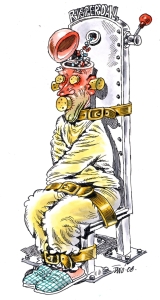

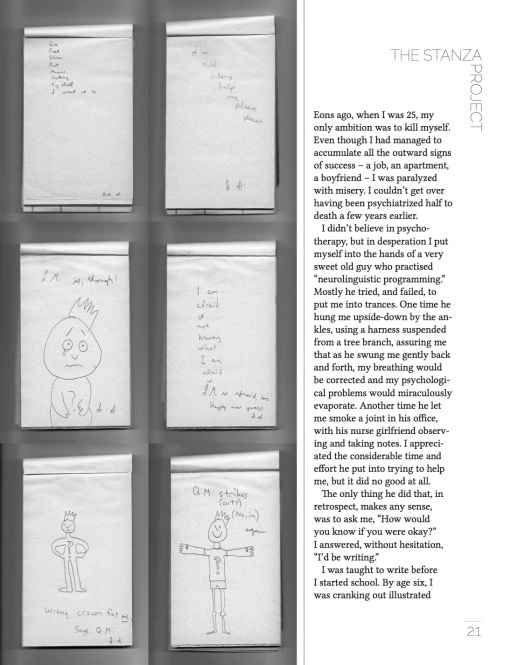



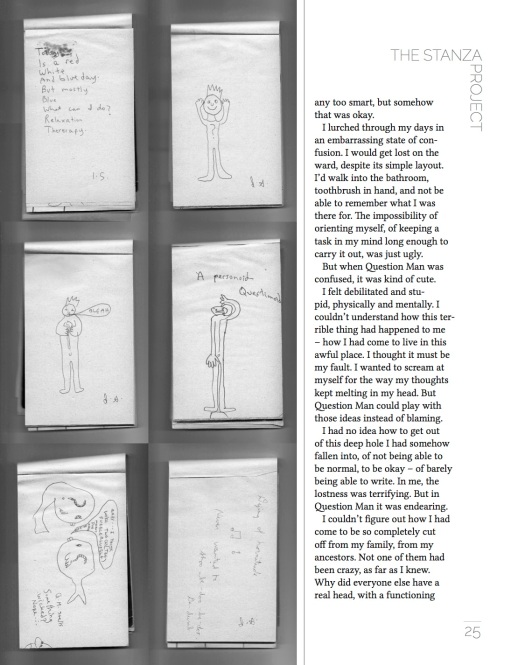
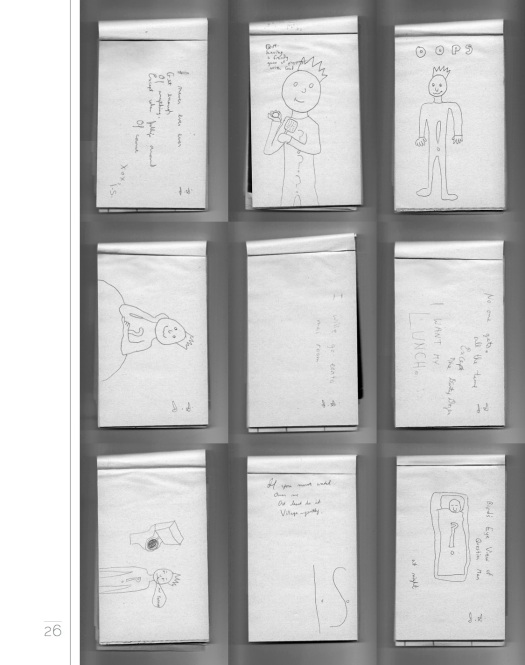
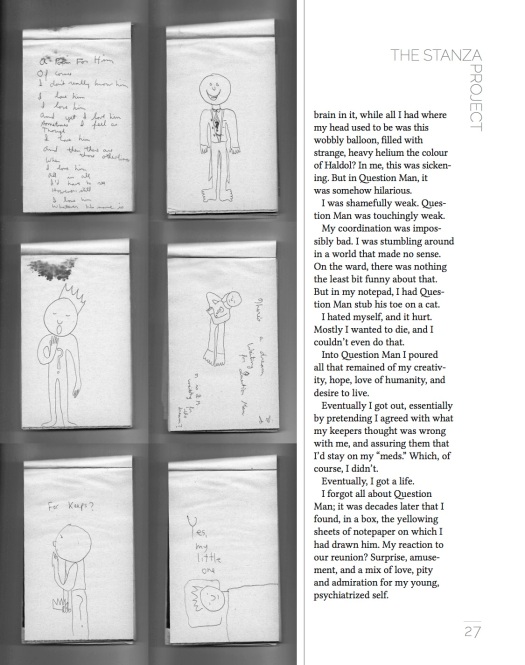










 These are understandably difficult issues. Historically, there has been a lot of difference of opinion and genuine debate. In 2006, the United Nations weighed in. They approved the Convention on the Rights of Persons with Disabilities (CRPD). The CRPD prohibits involuntary detention and forced interventions based on psychosocial disability. These are considered acts of discrimination that violate the right to equal protection under the law. Under the CRPD, people with psychosocial disabilities have the same rights to liberty, autonomy, dignity, informed consent, self-determination and security of the individual and property as everyone else.
These are understandably difficult issues. Historically, there has been a lot of difference of opinion and genuine debate. In 2006, the United Nations weighed in. They approved the Convention on the Rights of Persons with Disabilities (CRPD). The CRPD prohibits involuntary detention and forced interventions based on psychosocial disability. These are considered acts of discrimination that violate the right to equal protection under the law. Under the CRPD, people with psychosocial disabilities have the same rights to liberty, autonomy, dignity, informed consent, self-determination and security of the individual and property as everyone else.